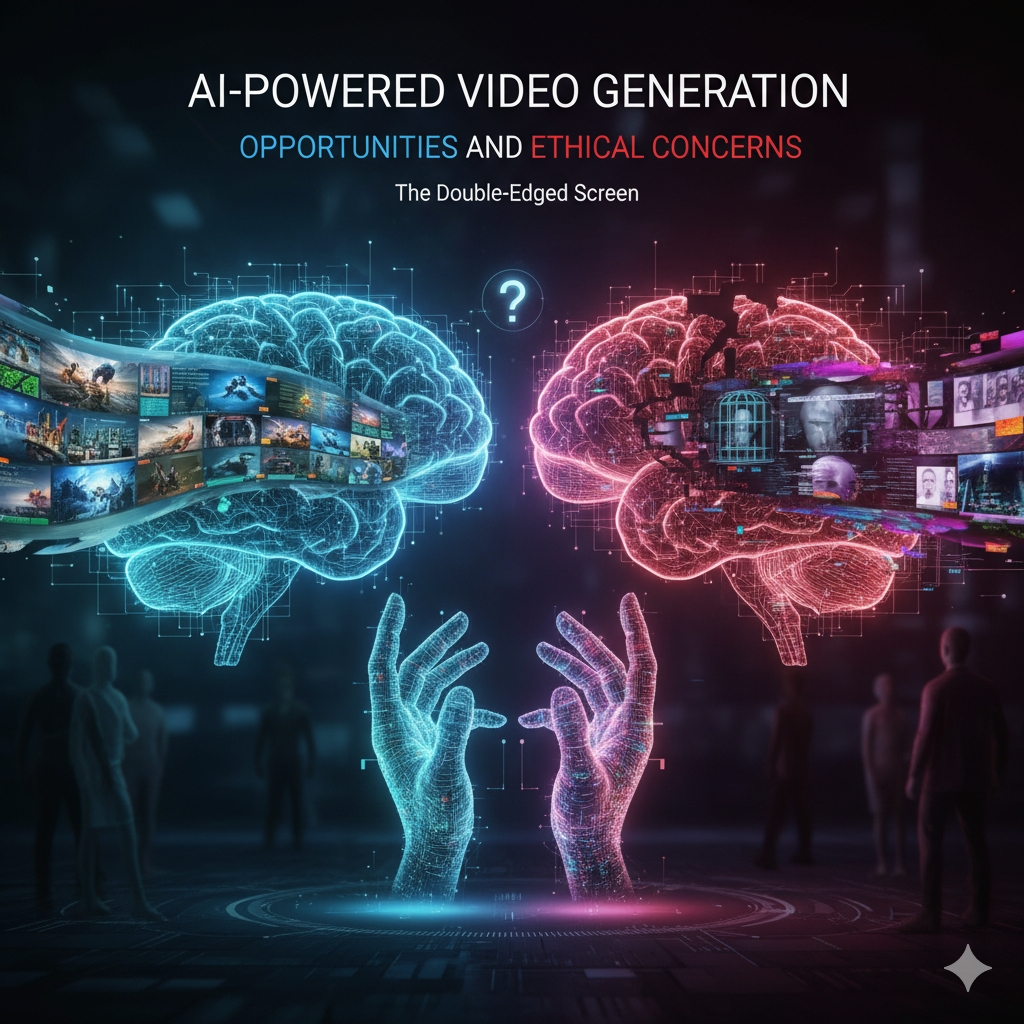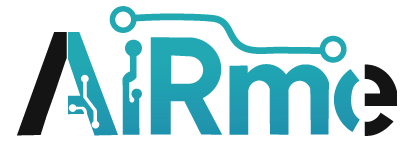
AI-Powered Video Generation: Opportunities and Ethical Concerns
The emergence of AI-powered video generation tools has been nothing short of transformative. With technologies like OpenAI’s Sora and Meta’s Vibes, creating realistic video content has become increasingly accessible, allowing creators to generate highly compelling and immersive video material without the traditional high costs, time, or expertise that were previously required. These advancements are opening up new avenues for creativity, marketing, entertainment, and education. However, with these unprecedented capabilities comes a host of ethical considerations, particularly regarding issues like deepfakes, content authenticity, and the potential for misinformation.
In this two-part blog, we will explore the opportunities offered by AI-powered video generation tools, followed by an analysis of the ethical dilemmas they raise. Let’s dive in.
Part 1: The Opportunities of AI-Powered Video Generation
The Rise of AI-Generated Video Content
Video content has long been a powerful medium for communication, entertainment, and education. However, creating high-quality video traditionally required significant resources—specialized equipment, skilled professionals, and a lot of time. Today, AI tools like OpenAI’s Sora and Meta’s Vibes are revolutionizing this process. These platforms utilize machine learning algorithms, neural networks, and generative adversarial networks (GANs) to create realistic, dynamic video content that is virtually indistinguishable from real footage.
What are OpenAI’s Sora and Meta’s Vibes?
- OpenAI’s Sora: OpenAI has made significant strides in AI video generation with the development of Sora, a tool designed to generate high-quality video content based on text input or prompts. Sora uses advanced transformer models and natural language processing (NLP) to understand text descriptions and translate them into visual media. This means creators can input a script or description, and Sora will generate corresponding video sequences in real-time, complete with natural-looking motion, lighting, and scene composition.
- Meta’s Vibes: Meta’s Vibes is another powerful tool designed for video generation. Similar to Sora, Vibes uses AI to create video content, but it takes it a step further by allowing for more personalized and nuanced adjustments. Vibes uses deep learning algorithms and style transfer techniques to generate videos that can replicate specific artistic styles, emotions, or even the appearance of specific actors or environments. Users can modify the tone, color palette, and mood of the video, tailoring it to specific needs.
Key Applications in Various Industries
1. Entertainment and Content Creation
AI-generated video content has opened up entirely new possibilities for creators in the entertainment industry. Filmmakers, YouTubers, and other content creators can now leverage AI tools to produce professional-level video content with minimal budget and time investment.
- Short-form Content: AI tools can automatically generate engaging short-form content for social media platforms like Instagram, TikTok, or YouTube Shorts. Creators can input themes, topics, and even text scripts, and AI will generate video content tailored for the desired platform.
- Feature Films and TV Shows: AI tools allow filmmakers to create visual effects, animate characters, or even digitally resurrect deceased actors, making it possible to create highly realistic scenes that would otherwise be time-consuming or prohibitively expensive.
2. Education and Training
AI-generated video content is also changing the landscape of education. Instructors and trainers can use these tools to create immersive, interactive, and customized learning materials.
- Virtual Classrooms: AI can generate interactive video lessons with real-time feedback, allowing for personalized teaching experiences. AI-generated characters can even act as virtual instructors, delivering lessons in a dynamic and engaging manner.
- Simulations: AI can create training simulations for various fields, including medicine, engineering, and the military. These simulations can mimic real-life scenarios, helping students and professionals practice in a controlled, risk-free environment.
3. Marketing and Advertising
In marketing, AI-powered video generation allows brands to create tailored video ads at scale, optimizing content for different target audiences.
- Personalized Ads: AI tools like Sora and Vibes can take customer data (such as browsing history, preferences, and demographic details) to create personalized video ads that resonate with specific consumers. This level of personalization could lead to a significant increase in engagement and conversion rates.
- Cost-Efficient Campaigns: Traditional video production can be expensive. AI video generation tools, on the other hand, allow brands to produce high-quality video content with minimal budget, making it easier for small businesses to compete in the digital advertising space.
4. Gaming and Virtual Reality
AI-powered video generation is also playing a pivotal role in the gaming and VR industries. In these areas, realistic and dynamic content is essential for creating engaging and immersive experiences.
- Dynamic Game Environments: AI can generate game environments and even interactive narratives in real-time, allowing developers to create vast, ever-changing worlds without manually designing every element.
- Immersive VR Experiences: AI can generate realistic 3D video content for virtual reality, creating lifelike avatars, environments, and interactions that are highly interactive and responsive.
The Speed and Scalability of AI in Video Creation
One of the most significant advantages of AI-powered video generation is the speed and scalability it offers. Traditional video production is a time-consuming process that often involves scripting, shooting, editing, and post-production. AI tools eliminate many of these steps, allowing creators to generate high-quality video content in a fraction of the time.
- Real-time Content Creation: Tools like Sora and Vibes allow for the real-time generation of videos based on prompts, enabling immediate feedback and quick iterations. This is a game-changer for industries like advertising and entertainment, where speed is crucial.
- Automating Video Production: AI video generation can also automate repetitive tasks in video production, such as color grading, scene transitions, and even voiceover generation. This reduces the need for human intervention and allows for the rapid production of content at scale.
Part 2: The Ethical Concerns of AI-Generated Video Content
While AI-powered video generation offers exciting opportunities, it also brings with it a set of ethical concerns. Chief among these concerns are issues related to deepfakes, the authenticity of content, and the potential for misinformation.
1. Deepfakes and Misinformation
One of the most controversial applications of AI video generation is the creation of deepfakes—videos that manipulate the likeness and voice of real people to create fabricated content. Deepfakes are generated using GANs (Generative Adversarial Networks) to superimpose faces, voices, and other characteristics onto existing footage.
The Rise of Deepfakes
Deepfakes have rapidly become one of the most concerning applications of AI technology. While some use deepfake technology for artistic or comedic purposes, the potential for malicious use is alarming.
- Political Manipulation: Deepfakes could be used to create false videos of politicians or world leaders saying or doing things they never did. This can lead to political manipulation, swaying elections, or even inciting violence.
- Celebrity Impersonations: Deepfakes are also being used to create fake videos of celebrities, often without their consent, leading to privacy violations and unauthorized use of their likenesses. In some cases, deepfakes have been used to create explicit content featuring public figures.
Combating Misinformation
The rise of deepfakes presents a significant challenge for the fight against misinformation. While AI video generation tools offer enormous potential, they also make it easier to fabricate content and spread false information.
- AI and Fact-Checking: One approach to combating deepfakes is the development of AI tools that can detect altered content. Companies like Microsoft and Facebook are working on technology that can identify deepfakes by analyzing video content for inconsistencies in lighting, shadow, and facial movements.
- Legal and Regulatory Measures: Governments around the world are beginning to explore laws and regulations around deepfakes. In some jurisdictions, it’s already illegal to create or distribute deepfake content without consent, particularly when it involves defamation or harm.
2. Content Authenticity and Trust
As AI tools become more powerful, distinguishing between authentic and AI-generated content becomes increasingly difficult. This raises the question: how do we maintain trust in digital media?
Challenges to Trust
The ability to create hyper-realistic videos means that consumers can no longer take content at face value. Content that looks real may, in fact, be fabricated, leading to a crisis of authenticity. This has wide-reaching implications:
- Journalism and News: In the world of news media, it’s essential that consumers trust that the video footage they’re seeing is accurate. If AI-generated videos become indistinguishable from real-world events, the line between truth and fabrication becomes dangerously blurred.
- Personal Privacy: AI tools that can create realistic likenesses of individuals—down to facial expressions and voice—raise concerns about consent and privacy. The use of an individual’s likeness in AI-generated content without their permission could lead to legal and ethical violations.
Ensuring Authenticity
To maintain trust in digital content, it’s crucial for both creators and consumers to have access to tools and mechanisms that verify the authenticity of media.
- Blockchain for Verification: One solution gaining traction is the use of blockchain technology to verify the authenticity of video content. By storing metadata and tracking the origins of video files on a blockchain, creators and viewers can confirm whether a video has been altered or fabricated.
- Watermarking and AI-Detection Tools: Another approach is the use of watermarks or digital signatures that identify AI-generated content. This would allow consumers to easily identify when a video has been generated or manipulated by AI, promoting transparency and trust.
3. Ethical Production and Accountability
As AI tools democratize video production, creators must take responsibility for the content they generate. Whether it’s for entertainment, marketing, or education, the ethical production of AI-generated video content is paramount.
Establishing Ethical Guidelines
To ensure that AI-generated videos are used ethically, companies, creators, and policymakers must establish clear guidelines for the responsible use of this technology. These guidelines should focus on the protection of privacy, the prevention of misuse, and the promotion of transparency in AI content creation.
Conclusion: Embracing AI Video Generation Responsibly
AI-powered video generation offers boundless opportunities for innovation, creativity, and efficiency. However, as with any powerful technology, there are significant ethical challenges that must be addressed. By balancing innovation with responsible usage, we can unlock the full potential of AI while mitigating the risks associated with deepfakes, misinformation, and content authenticity.
In the next few years, the ethical landscape surrounding AI-generated video content will likely continue to evolve. As technology progresses, so too must the frameworks that govern its use, ensuring that AI remains a force for good in shaping the future of digital media.


Leave a Reply